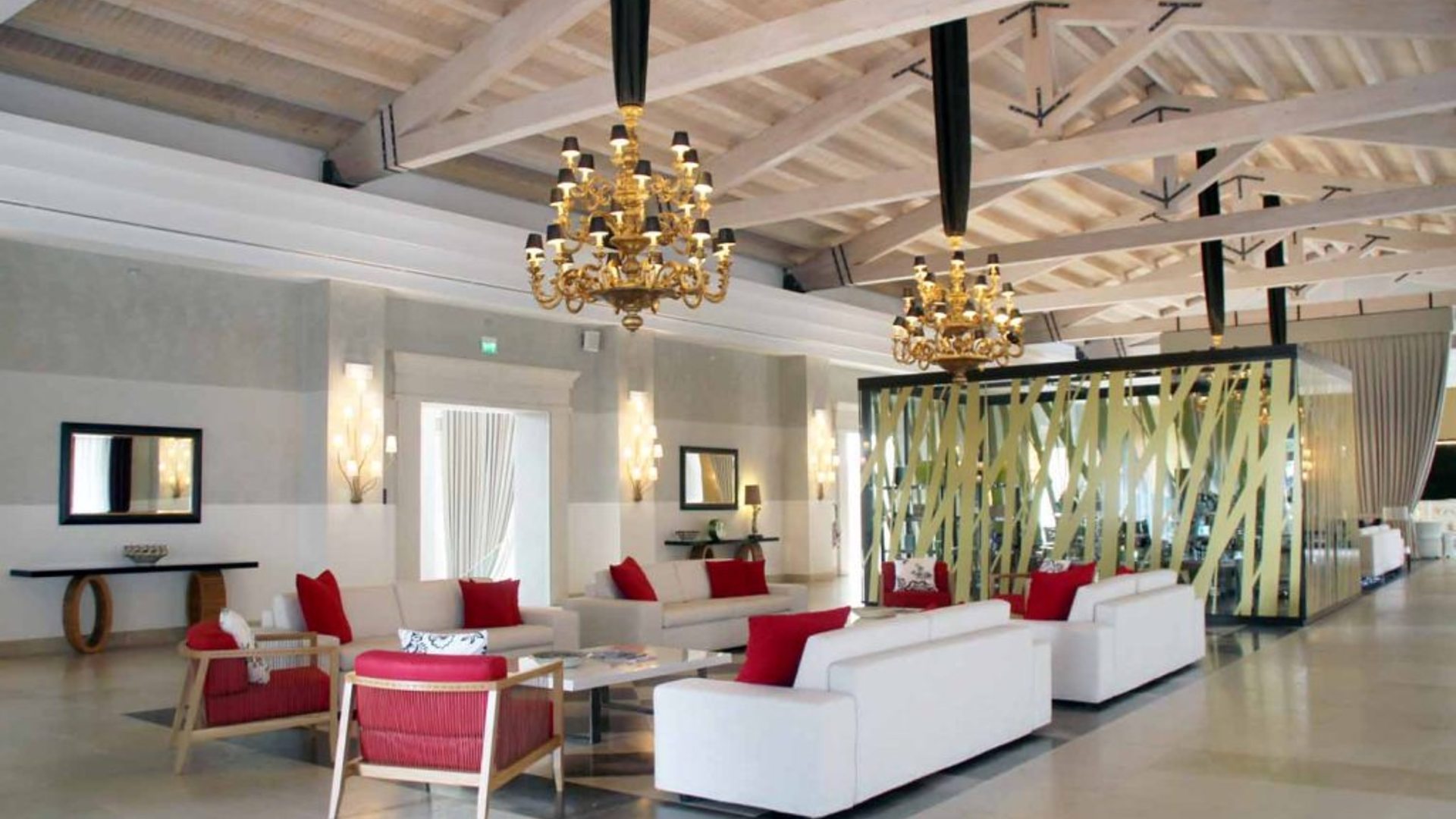DONNAFUGATA GOLF RESORT&SPA
In the context of a rebranding operation for the preexisting Donnafugata Golf Resort & Spa – which joined the Starwood Hotels & Resorts chain in October 2016 – Studio Marco Piva was asked, in the first phase of a wider renovation project involving the whole complex, to do a restyling of the large common area on the ground floor. Since Donnafugata's customers are used to a cozy, relaxing and, above all, familiar atmosphere, the client wanted to make some non-invasive improvements of both image and functionality and they therefore requested a light intervention, able to enhance the complex while preserving, at the same time, its historical elements.
Studio Marco Piva's intervention focused on identifying those elements of the interior decoration that were to be preserved and enhanced and on replacing and adding mobile furniture with an aesthetic, functional and emotional value, able to recall aspects of the territory.
Photo Credit: Franco Noto / Donnafugata Golf Resort & SPA
From a functional perspective, the large ground floor area, a typical feature of rural architecture in the early 20th century, with its high truss ceilings, was deeply chaotic: acoustically, thermally, visually and organizationally. The project concept came from the need to create a rhythm by dividing the spaces and assigning them a function, without any kind of architectural intervention.
Two strong scenery flats – two floor to ceiling curtains and a glass block – enhance the existing architecture while, at the same time, ideally dividing the large hall into four spaces: the reception area, a waiting/lounge area, a shop area and a parlor area designed as an extension of the adjacent café.
Besides organizing the spaces visually, these devices also play an important acoustic role by interrupting sound waves; they maintain the temperature (by better retaining air-conditioning) and they act as filters for the sunlight coming through the three large French windows at the bottom of the hall.
From a chromatic perspective, on the one hand the chromatic mood has been chosen according to the local architecture and decoration: this was the case with the golden hues referring to the Sicilian Baroque (chandeliers and reception desks), which were not only maintained but enhanced in the reception area, or with the olive green and the orangey red for the chairs upholstery in the lounge area, or with the fabric weaves, the upholstery decorations and the chandelier lamp shades, also inspired by the Sicilian territory.
On the other hand, though, it was decided to soften the bright, vivid colours of the tradition and to opt for neutral tones of white, taupe and black in order to create a feeling of calmness and serenity within the space.
Reception area
In the reception area the three original desks were preserved, with their typical Sicilian Baroque style, and enhanced by replacing the old, lightly coloured ceramic wall of the rear desk with a pietra pece cladding, a special type of igneous stone whose shades range from coffee to black, making a strong constrast with the desks.
The portal framing the desk has been covered in gold leaf, thus recalling the desks and paying homage to the history and the traditional colours of the Sicilian territory.
The old lamps have been replaced by a system of directable spotlights around the desks to ensure some punctual light sources on the operational area. A strip led has been designed for the wall in order to create a theatrical spot light – which will be used at a later date to showcase clocks or frames – while, at the same time, enhancing the different hues of the stone.
The partition between the reception area and the lounge area was achieved through two large scenic curtains, a clear reference to the theatre as an essential element in Sicilian culture and history. The idea was to lighten and to modernize the scenic presence of the traditional red velvet through a lightweight, precious fabric that drapes richly and softly, aligned with the patterns on the floor. The curtains, depending on whether they' are open or closed, are also functional to an interesting "see, don't see" effect and can completely screen off the area behind them.
Waiting / Lounge area – Parlor area
In the waiting/lounge area and in the parlor area all the existing seats and small tables were replaced in order to create different situations responding to different needs.
In the waiting area, for instance, the furniture has been arranged in a more informal and flexible way, with different types of seats – pouffes, armchairs and single chairs – to allow sociability and intimacy at the same time. The more formal parlor area has been provided with tidily arranged comfortable sofas.
The existing suspension lamps have been preserved and enhanced by lowering their heights, which enables them to better interact with the environment, and by covering their long chains in soft fabrics for a more subdued and welcoming appearance. The lamp shades have also been replaced with bigger ones in order to highlight their presence while, at the same time, covering them with the same fabrics used for the chains.
Shop area
The shop area, which was previously limited to a simple display cabinet attracting visitors to another area of the complex, now becomes a focal point, a grand scenic design meant to divide a space and give it a new function.
A large glass and gold metal box, with a a texture that shows the content through while recalling the colours typical of the territory, houses an area reserved to the Sicilian fragrance brand Ortigia (a small neighbouring island).
The transparent glass box, a lightweight, non-invasive element, separates the informal waiting/lounge area from the more formal parlor area.












